Easter And The Moon. How Does The Moon Determine Easter?
28th Mar 2024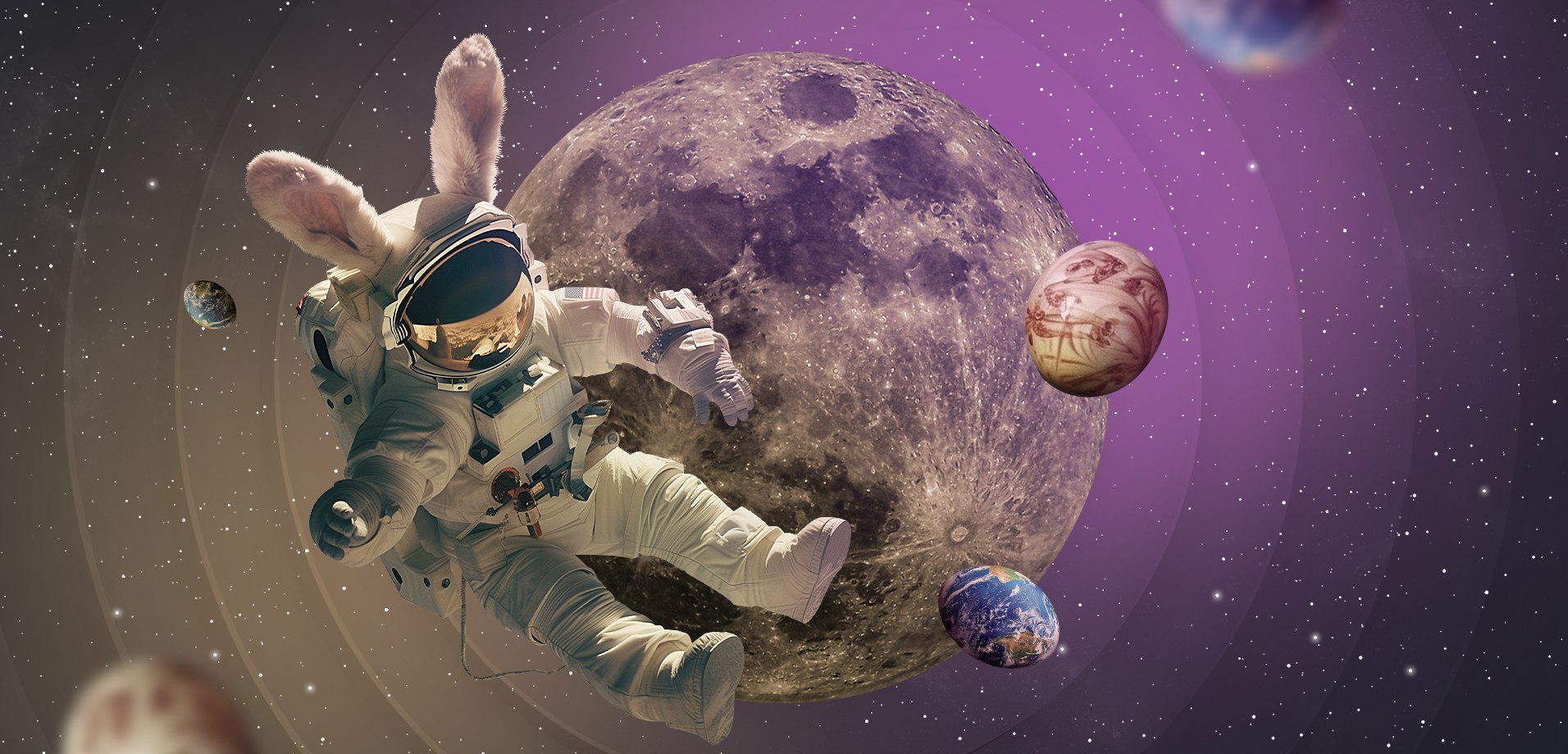
When exactly is Easter? It sounds like a straightforward question, doesn’t it? Just a quick glance at the calendar reveals Easter falls on 31st March this year. Yet, as you continue down the calendar, you’ll find it shifts to 20 April next year, and then 5 April the year after. Unlike the dependable dates of holidays like Christmas, Halloween, and Valentine’s Day, Easter never settles on the same date twice in a row. It’s constantly on the move. But why is that? We’re here to unravel the seemingly simple yet surprisingly intricate questions: why does Easter date change every year? And how does Easter and the Moon are connected?
Easter is a holiday that is both deeply religious and also very old, which might be where some of the confusion comes from. We’ve changed how we keep track of time on a few different occasions. And to make matters even more confusing, Easter Day is also observed on two separate days on two totally different calendars, depending on which religion you observe. What’s more, there is also an influence of the moon for some reason. So, let’s untangle this tricky question once and for all, and we’ll need to start with the Easter and the moon duet.
Is Easter Based On the Moon?
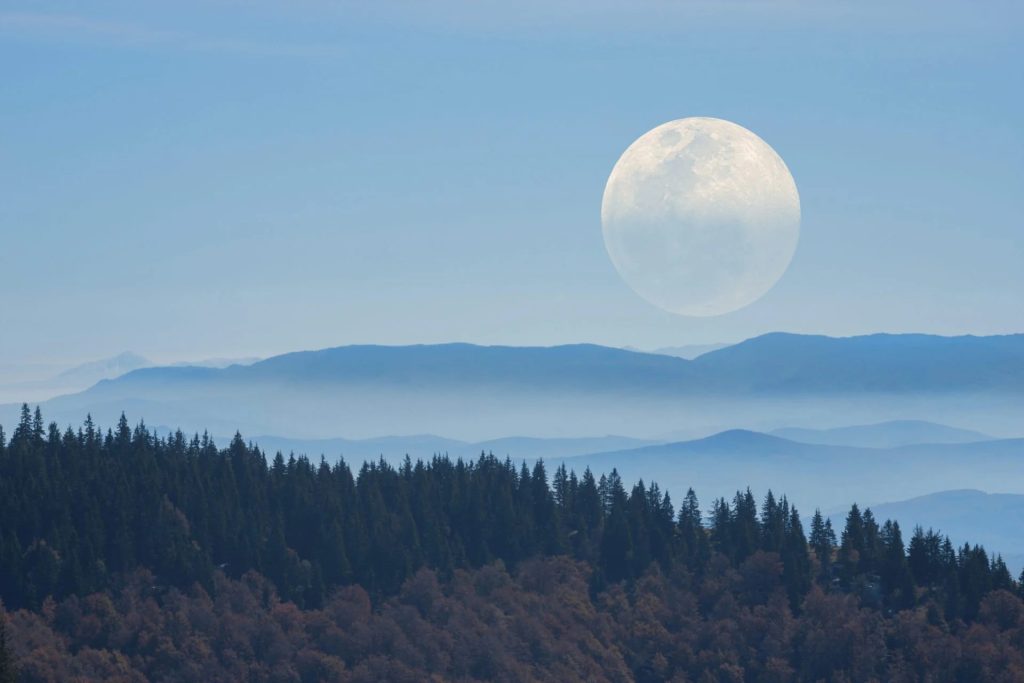
The short answer is yes. But why? To understand the intertwined history of Easter and the Moon, we must journey back through the time to the ancient civilizations whose lives were intimately connected with the rhythms of the cosmos. Many pre-Christian cultures celebrated springtime festivals marking the equinox, a time when day and night are of equal length, symbolising the balance of light and darkness.
One such festival was the pagan celebration of Eostre, from which the name Easter is believed to have originated. Eostre was associated with the spring equinox and fertility rites, signifying the renewal of life after the barrenness of winter. Central to these ancient observances was the Moon, whose phases served as a celestial calendar guiding agricultural practices and religious ceremonies.
At the heart of calculating Easter is the concept of the Paschal Full Moon, a lunar event that holds special significance in Christian tradition. The Paschal Full Moon is not necessarily the astronomical full moon but is instead a symbolic marker used to fix the date of Easter. So, is Easter based on the moon? For sure!
The Bible tells us that Jesus Christ’s crucifixion and resurrection happened around the time of the Jewish Passover. And here’s where it gets interesting: the Passover was celebrated on the first Full Moon following the vernal equinox, signalling the arrival of spring. So, naturally, early Christians adopted this lunar-based timing for Easter, causing it to be celebrated on different dates each year.
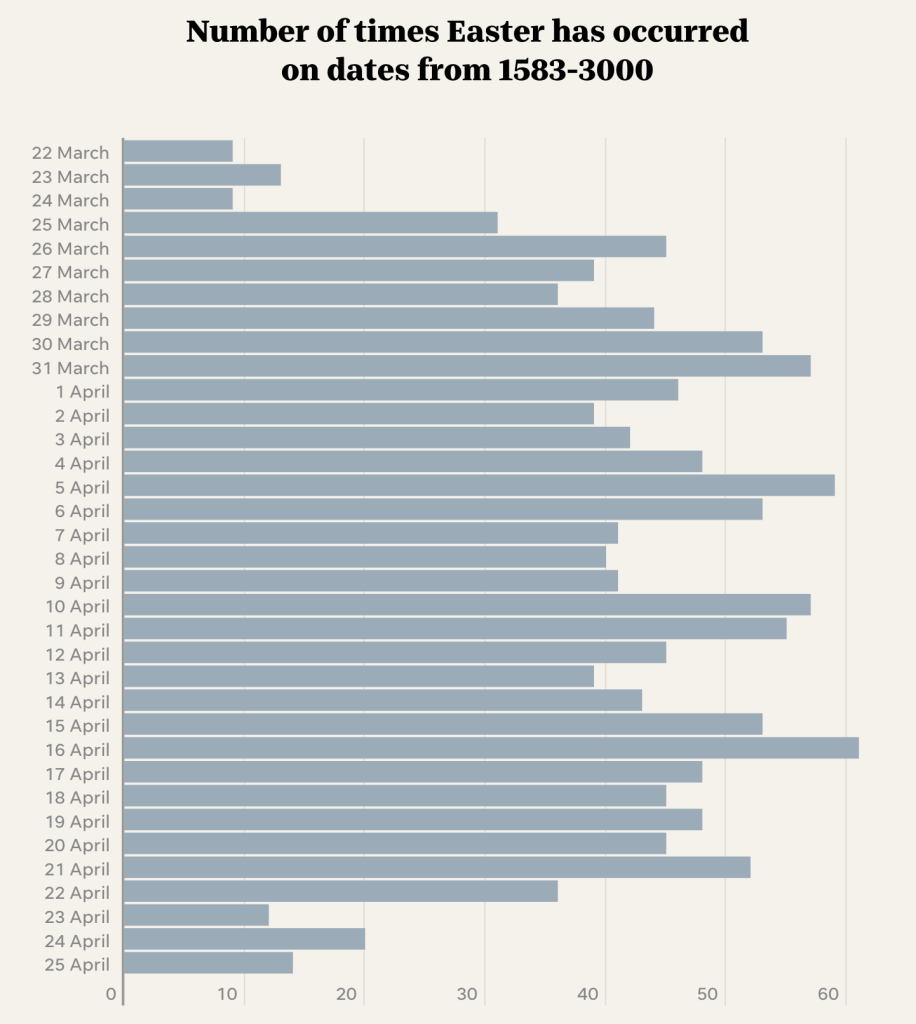
Why Does Easter Change Every Year?
Easter’s date varies because it’s based on a combination of astronomical and ecclesiastical calculations. But there is one thing we can tell for sure: Easter and the moon are tied. The Council of Nicaea convened in 325 AD, established that Easter would be celebrated on the Sunday following the Paschal Full Moon, which is the first full moon after the vernal equinox. While the equinox date can differ yearly, the church consistently regards 21 March as the vernal equinox.
Despite the equinox date being set on 21st March, the astronomical event that determines the timing of the Paschal Full Moon can fluctuate. Because the lunar calendar they used back then doesn’t precisely align with the Gregorian calendar (the calendar most commonly used today), the Paschal Full Moon can fall on different dates each year. That is why Easter can actually occur on any of the 35 days between 22nd March and 25th April.
Is it too complicated? Let us answer the question of “Why is Easter linked to the Moon?” and you’ll understand it all.
In Simple Words: Why Is Easter Linked to the Moon?
First of all, when the Council of Nicaea convened, Easter was already a significant event in the Christian calendar, drawing thousands of pilgrims to Jerusalem and other holy sites to honour the Resurrection. So, the rule of the Council of Nicaea about the full moon was established to make it certain that the pilgrims would always have the light of a full moon to guide them on their way at night.
But you can say: “How can it be possible for the Easter to occur on any of the 35 days? Surely, the Jesus’ resurrection occurred on a specific date during the year.” Well, the answer is yes. It just depends on which calender you look at (another point to Easter and the moon connection).
How Does the Moon Determine Easter?
In every day, we use what is known as the Gregorian calendar, which is a type of solar calendar. It’s based on the sun’s position relative to the stars. Easter, however, predates the Gregorian calendar by about 1400 years. Although this holiday has to occur within a precise period in the Gregorian calendar, the exact date is determined by the lunar calendar. It is based on the monthly cycles of the moon.
The exact formula for the Easter date is as follows: it falls on the first Sunday after the first full moon to occur after the spring equinox. Okay, fair enough. But how does it explain the Easter day fluctuation during the years? It all comes down to the Easter and the moon. If you look at the Gregorian calender, it has 12 months, each with 28 to 31 days (up to 365 days a year). The lunar calendar is split into 12 months, each with 29 to 30 days (up to 354 days a year). In other words, they don’t match.
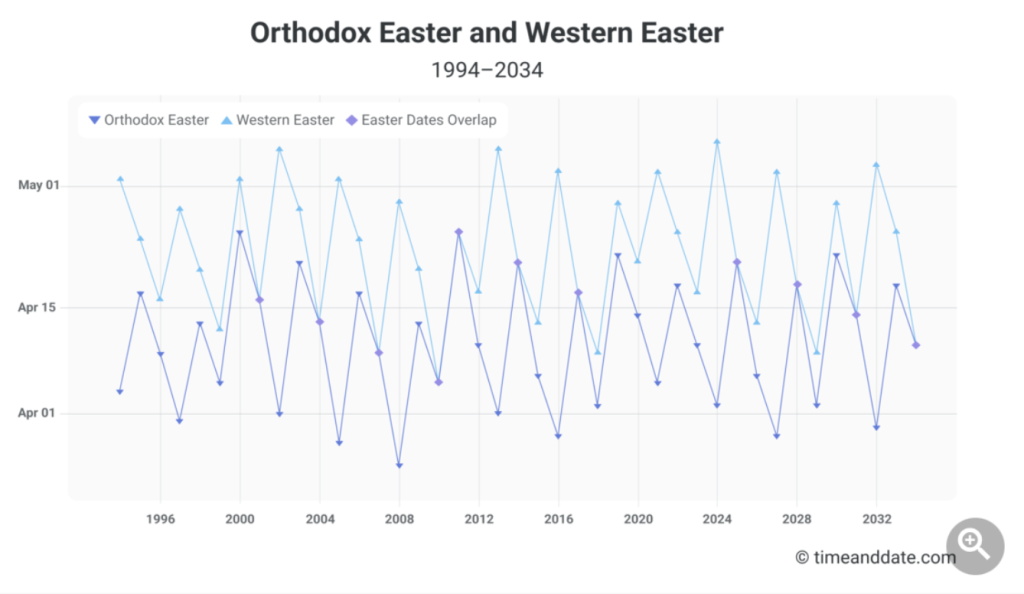
If we were to use only the lunar calendar to set the date for Easter, it would always occur 11 days earlier than the day before. It means the Easter will eventually happen twice a year – once in January and once in December. A solar calendar constraint had to be used to avoid issues like that and ensure Easter fell after the spring equinox. Although it did solve the lunar calendar problem, Easter still occurs twice a year, mainly because Western Christianity uses the Gregorian calendar, while Orthodox Christians still rely on its predecessor – the Julian calendar, and you guessed it, they don’t match either.
What Is the Full Moon Before Easter Called? It Has Surprising Connection!
The first full moon before Easter that occurs after the spring equinox is called the Paschal Full Moon. But here is an interesting twist to it: “Pascha” actually means “Easter” in Slavic languages, taking on an even deeper resonance and becoming the very name for Easter itself. Another point to how Easter and the moon are intertwined. This linguistic fusion underscores the profound connections between Easter, the Paschal Full Moon, and the rich tapestry of cultural and religious traditions that span the globe.
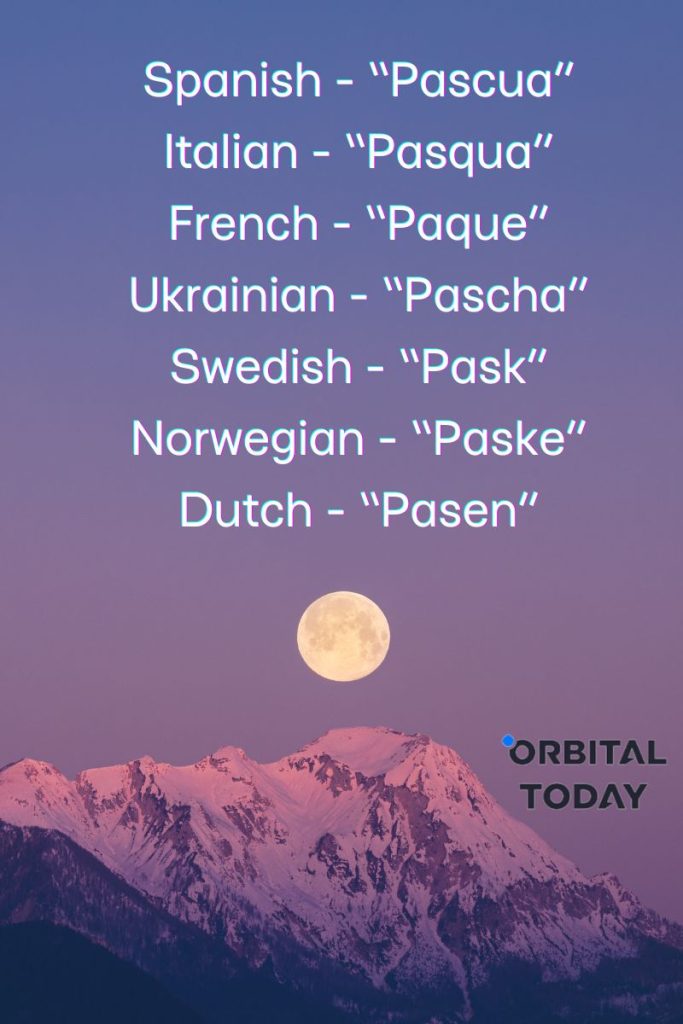
There is more to it. The term “paschal” traces its origins back to “Pascha,” a transliteration of the Aramaic word meaning Passover – a nod to the connected nature of these sacred observances. Across different languages and cultures, the resonance of “Pascha” echoes through the centuries. That’s how the word “Easter” sounds in different languages:
How does the moon determine Easter? As you see, in some cases, the moon becomes the Easter itself.
What Day Is Easter This Year?
Let’s apply the above-mentioned formula to figure out what day Easter is this year. In 2024, the first full Moon of spring happened on 25 March, which is called the Full Worm Moon. This moon is considered the Paschal Moon, so Easter Sunday falls on the first Sunday after it, which is 31 March 2024.
When Is Easter 2025?
Next year, Easter is back to the month of April. It will fall on 20 April 2025, much later than the past two years. Here is a table of upcoming Easter dates, so you can always be on track.
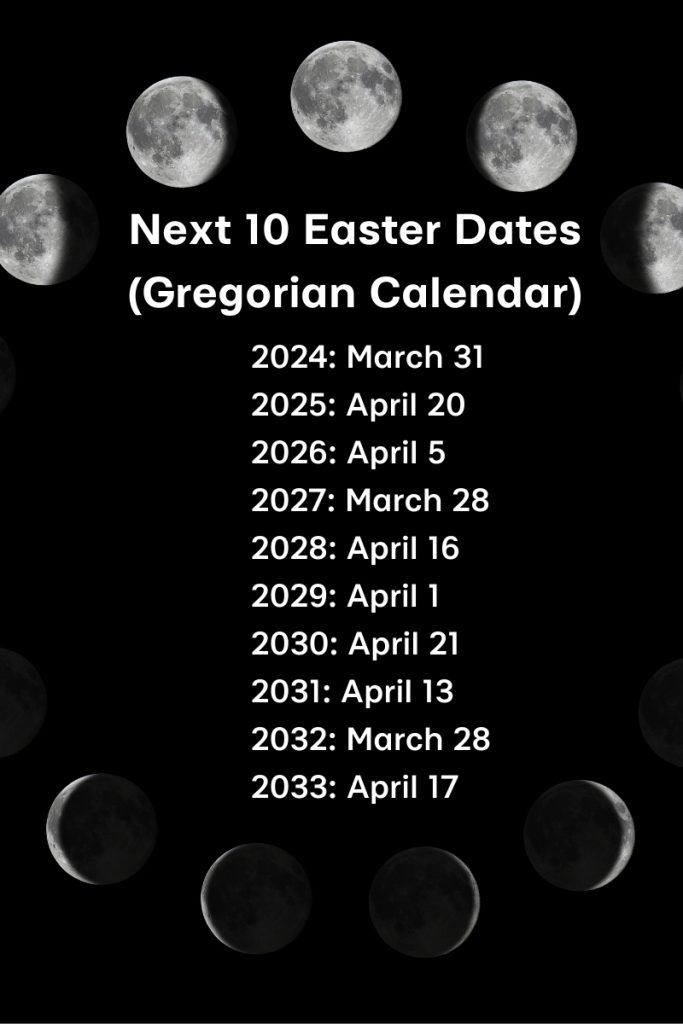
How Is the Easter Bunny Related to the Moon?
Easter, with its vibrant celebration of spring and new life, has roots in both Christian tradition and ancient customs. While the Christian significance revolves around the idea of new life through Christ’s resurrection, there’s also a broader theme of renewal that echoes throughout the season. Over time, these two strands intertwined, creating a rich tapestry of Easter traditions.
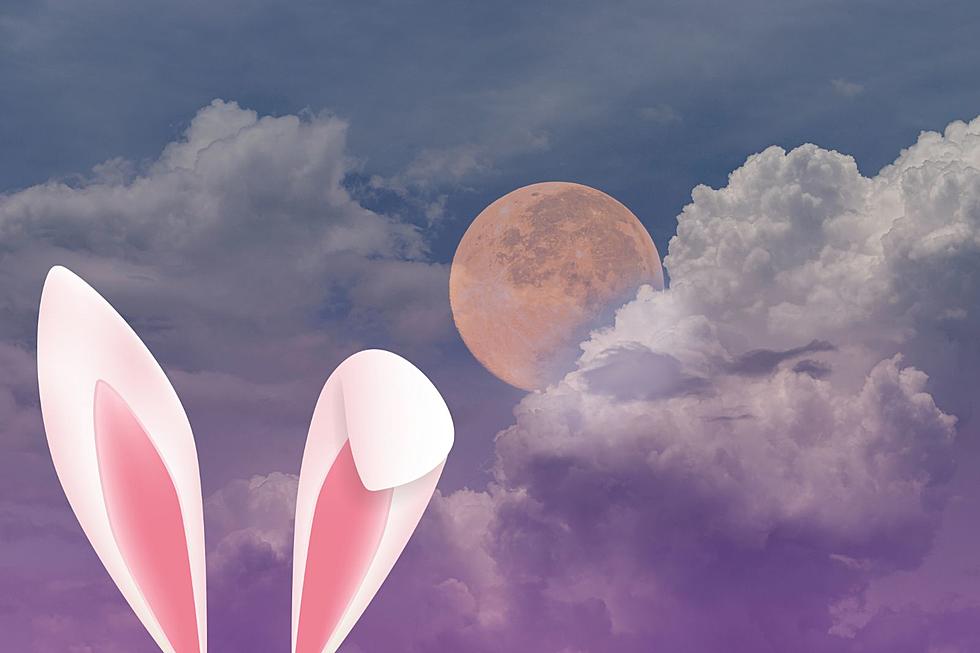
Now, let’s zoom in on our furry friend, the Easter bunny. Why a bunny, you ask? Well, it turns out that any critter known for its prolific offspring was fair game for inclusion in the Easter festivities. And the humble hare fit the bill perfectly. But here’s where it gets really interesting – the hare has deep-rooted ties to the Moon in ancient symbolism.
The hare’s lunar connection finds resonance in its portrayal as a sacred symbol of the goddess Eostre. Eostre, an ancient Germanic goddess of spring and fertility, was worshipped during the vernal equinox, marking the onset of spring. Legend has it that Eostre once transformed a bird into a hare, imbuing it with the ability to lay eggs—an origin story that intertwines the hare with themes of fertility and renewal.
Weather Whispers: Easter’s Folklore Mysteries
Easter is the season of rebirth, renewal, and, according to folklore, some rather curious weather predictions. Soon, you’ll have another opportunity to check how much truth lies behind these age-old sayings.
“If it rains on Easter Sunday, it will rain every Sunday for seven weeks in a row.”
“In whatever direction the wind blows on Good Friday, it will blow for forty days.”
“If there’s enough rain on Easter Sunday to wet a pocket handkerchief, there will be a good crop this year.”
“The sun never shines on Good Friday.”
“The weather on the first Sunday after Easter settles the weather for the whole Summer.”
At first glance, rainy, windy, and cloudy sounds like typical adjectives to describe the weather of the first months of spring. But you are the only person who decides what to believe in. This Easter, OrbitalToday wishes you to believe in the resilience of the human spirit, the beauty of nature’s rebirth, and the warmth of cherished traditions.
References & Additional Information:
- https://www.usatoday.com/in-depth/graphics/2023/04/07/how-easter-determined-each-year-graphics/11598692002/
- https://955thefish.com/holiday/undertanding-the-history-and-symbols-of-easter#:~:text=Easter%20comes%20during%20spring%20and,ancient%20symbol%20for%20the%20moon
- https://www.rmg.co.uk/stories/topics/when-easter#:~:text=The%20simple%20standard%20definition%20of,Easter%20is%20the%20next%20Sunday
- https://www.timeanddate.com/calendar/determining-easter-date.html
- https://www.almanac.com/easter-paschal-full-moon
- https://aa.usno.navy.mil/faq/easter
![Beauty of the Pink Moon And Lyrid Meteor Shower in This Week’s Best Astrophotos [19-26 April] Beauty of the Pink Moon And Lyrid Meteor Shower in This Week’s Best Astrophotos [19-26 April]](https://orbitaltoday.com/wp-content/uploads/2024/04/Pink-Moon-is-on-its-way-above-the-mountains-1-300x300.jpg)





Thank you for your comment! It will be visible on the site after moderation.